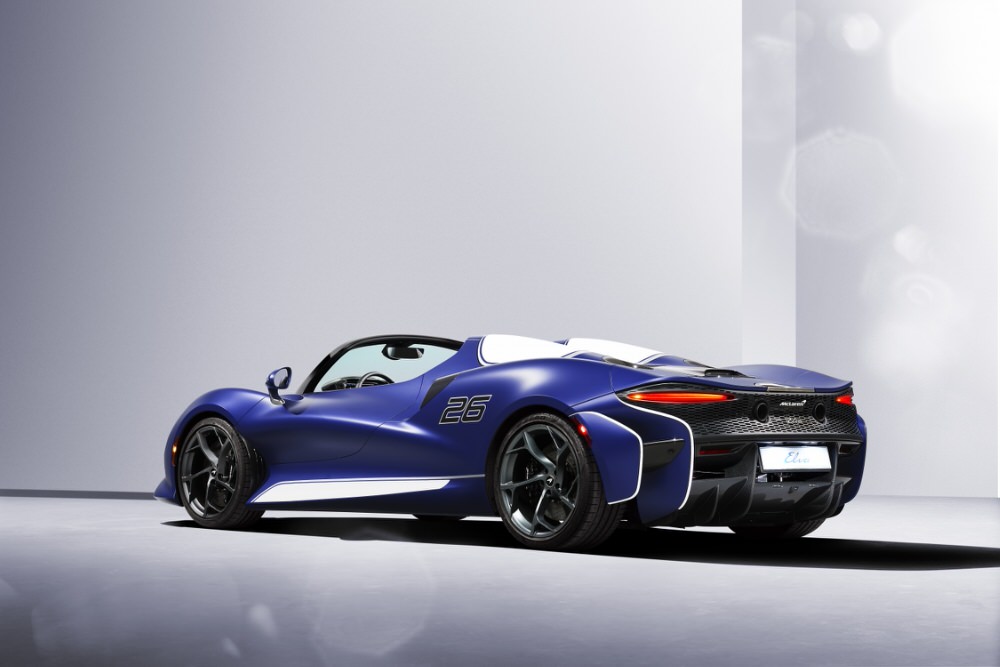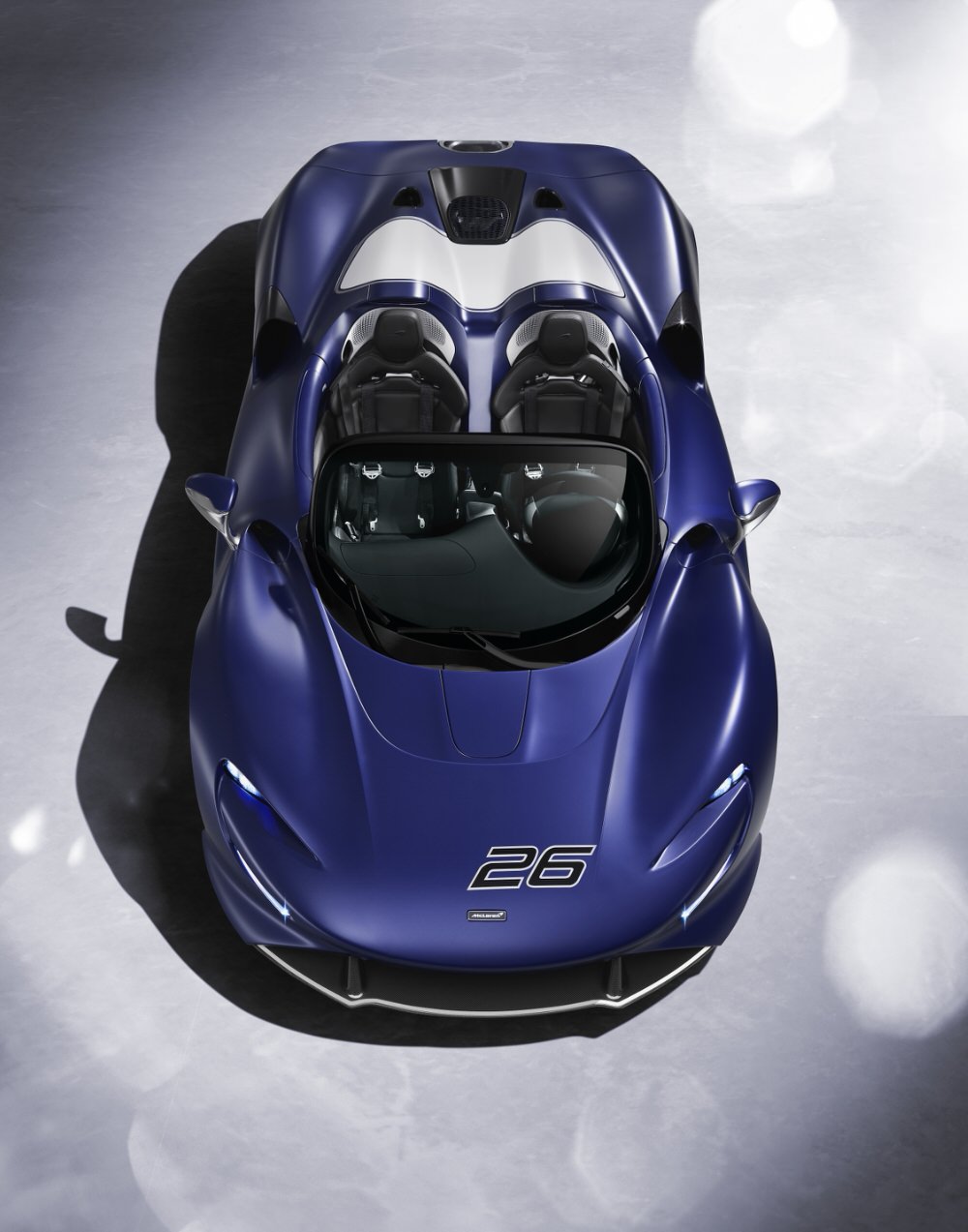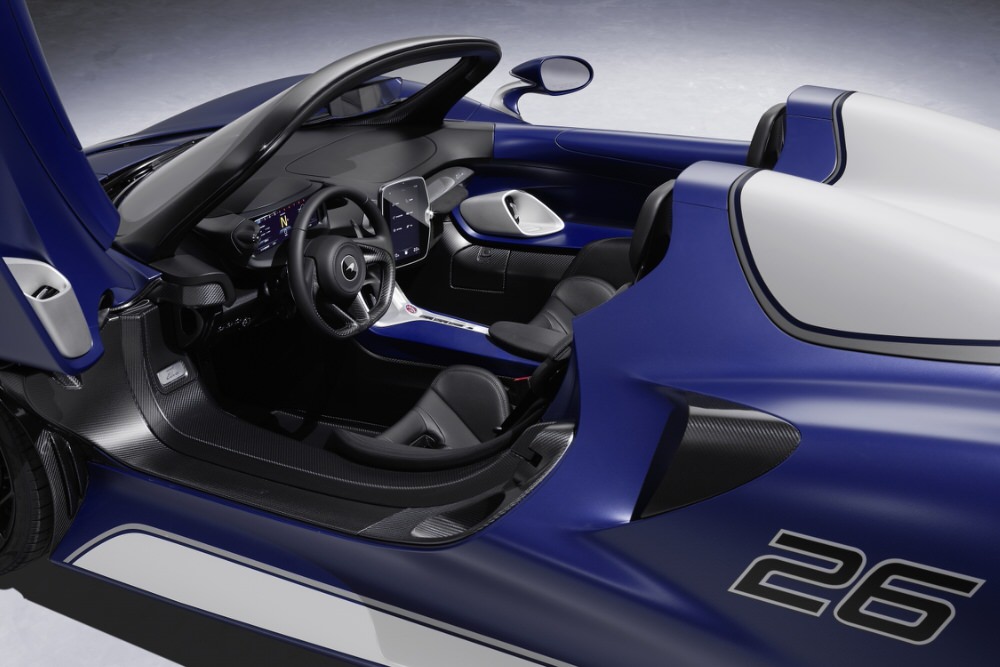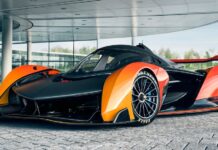Luxury supercar manufacturer McLaren Automotive will shortly commence production of the windshield version of its McLaren Elva roadster. Designed for customers who prefer to have a physical screen rather than the barrier of air provided by the Active Air Management System (AAMS), as well as to meet local legal requirements in some states in the USA, the windshield variant – which will be among the rarest of McLarens – is revealed today in full for the first time, with images of the prototype car.
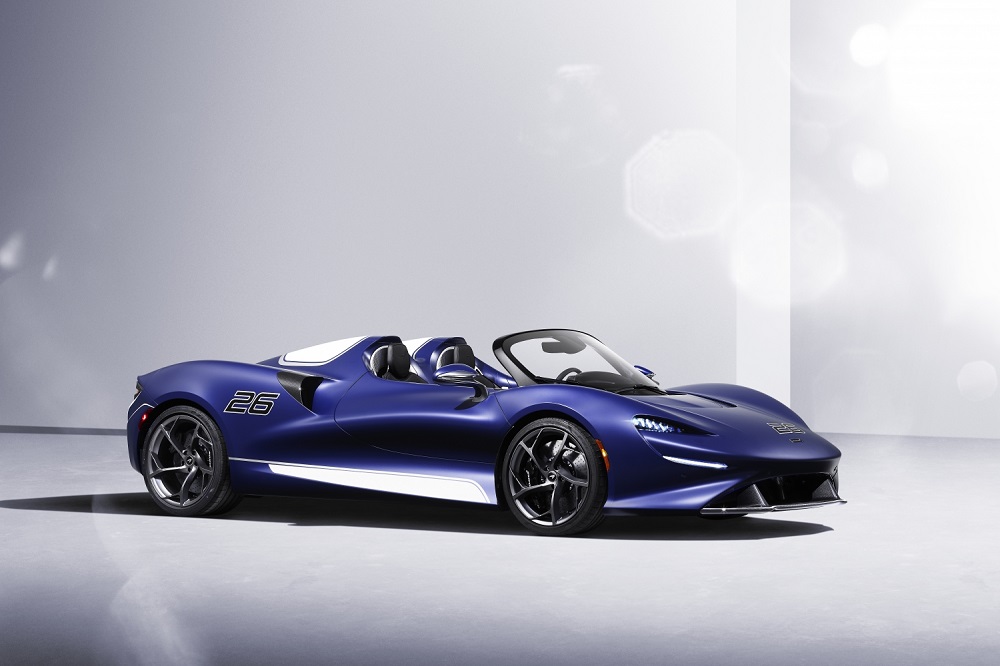
McLaren Elva: Ultimate connection between a driver, the road and the elements
“Super-lightweight and extremely powerful, the Elva delivers the ultimate connection between a driver, the road and the elements. Created to celebrate the pure joy of driving, it’s one of the most distinctive – and exclusive – cars we have made. Roofless and without windows, whether you opt for the screenless model with its sophisticated AAMS technology that provides an invisible barrier of air, or the windshield version with an additional level of enclosure, this is a roadster that rewards owners with the most exhilarating of open-air driving experiences, delivered as only a McLaren can.” Mike Flewitt, Chief Executive Officer, McLaren Automotive
No roof, no side windows and no rear screen
While having had its own engineering programme to optimize aerodynamic and dynamic performance, the windshield Elva shares all of the ethos and performance of the original car: neither has a roof, side windows or rear screen, which when combined with a dry lightest weight of less than 2866 lbs* and a mid-mounted, 804bhp, twin-turbocharged 4.0-litre V8 engine, delivers the ultimate in driver exhilaration.
The screenless Elva is McLaren Automotive’s lightest-ever road car and the target for the windshield version is only 44lbs* heavier, even with the inclusion of electronically synchronized rain-sensing wipers, washer jets and sun visors, as well of course as the heated glass windshield within a carbon fibre surround. The Active Air Management System (AAMS) is deleted as it has no role to play in the windshield car.
The acceleration of both versions is comparable with that of a McLaren Senna, the screenless model reaching 62mph from standstill in 2.8 seconds* and covering 0 – 124mph in 6.8 seconds*. Dynamic performance and vehicle stiffness also remain unchanged from the screenless car, as does the scintillating driving experience. The windshield, which is a permanent fixture, affords greater protection from the elements but it does not in any way reduce the levels of excitement.
The Elva links McLaren’s heritage to its present and future with a name and style that recalls the McLaren-Elva race cars of the 1960’s. These were amongst the first sportscars designed and raced by Bruce McLaren and the company that he founded, and today’s Elva was created to evoke the spirit of driving enjoyment symbolized by these cars.
Created as an homage to Bruce McLaren’s legendary race cars, heritage liveries like that of the Satin Casa Blue windscreen model prototype pictured have captured the imagination of Elva owners. Demand for bespoke customization of this kind by McLaren Special Operations (MSO) has produced a series of dramatic and unique cars that stand out even among one of the rarest of McLarens – no more than 149 examples of the Elva will be specified and built to customer order.
The first examples of the windshield Elva will be delivered to customers towards the end of this year, following personalization by McLaren Special Operations.
Icon Story: The McLaren F1 GTR Longtail. Click here.
More Information: cars.mclaren.press

